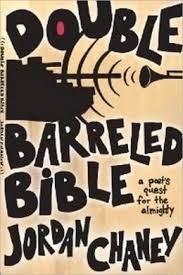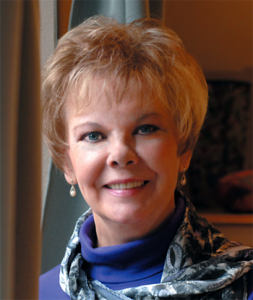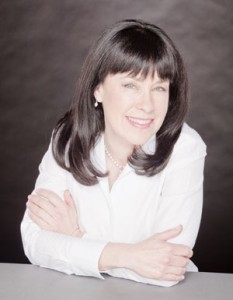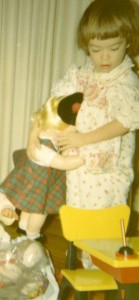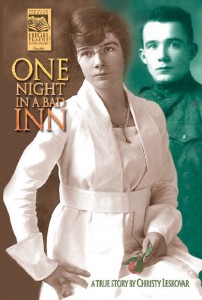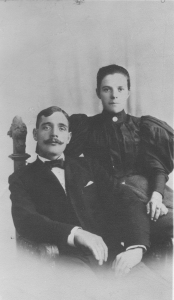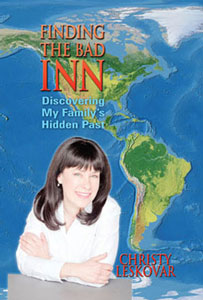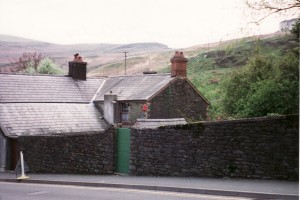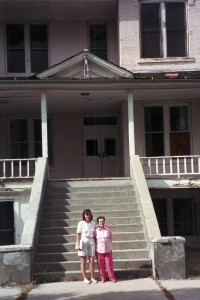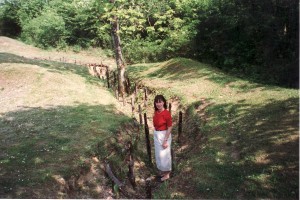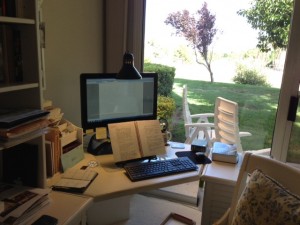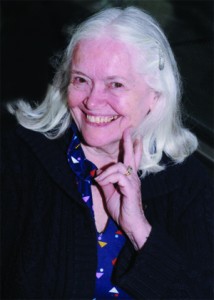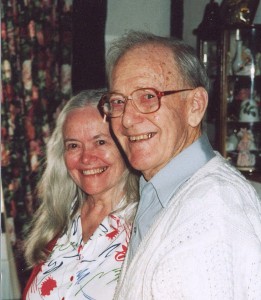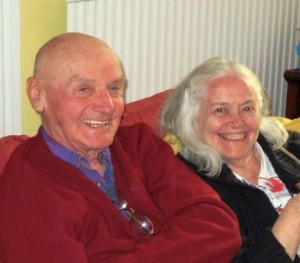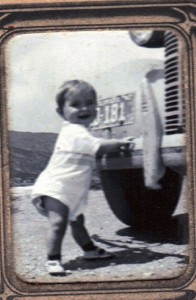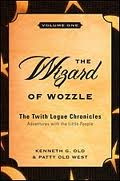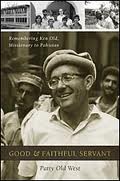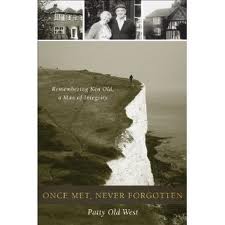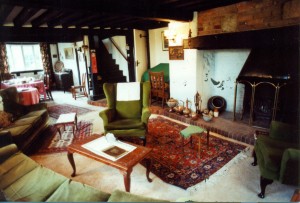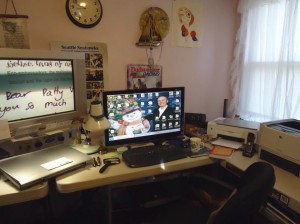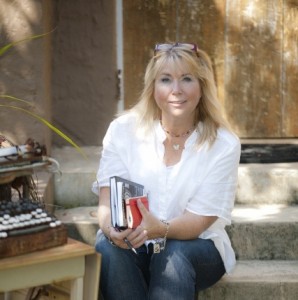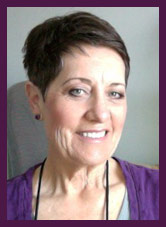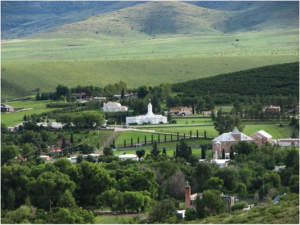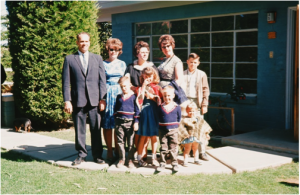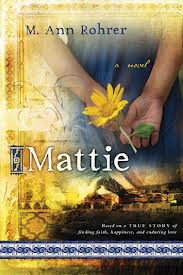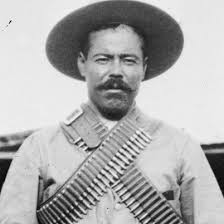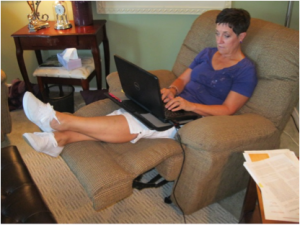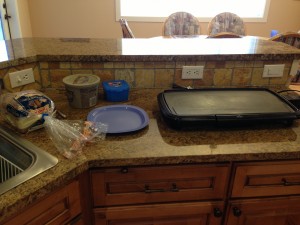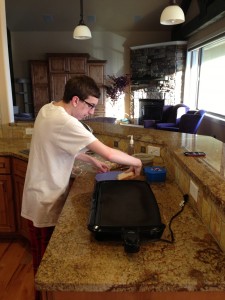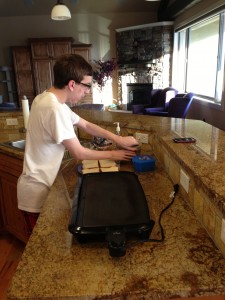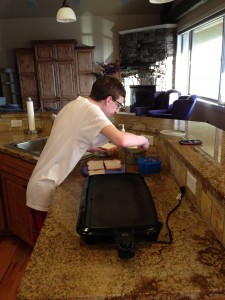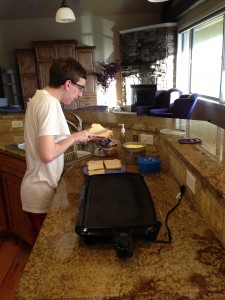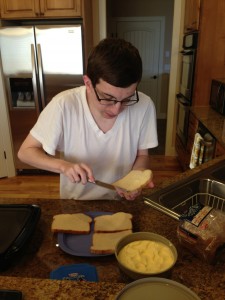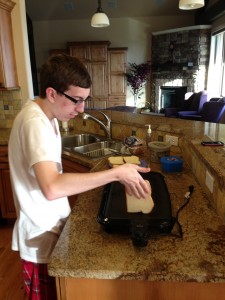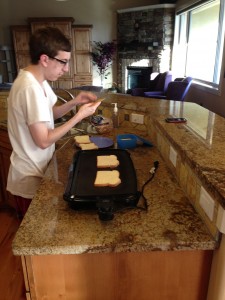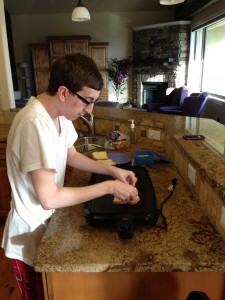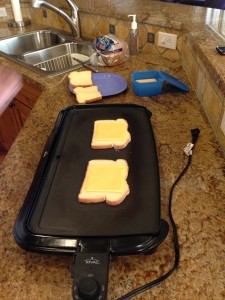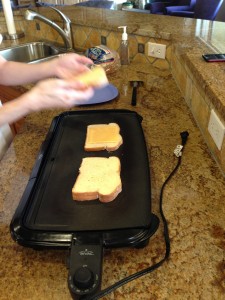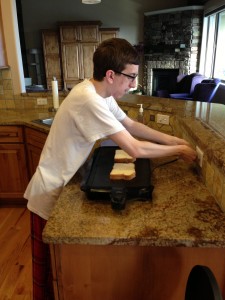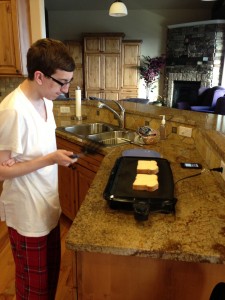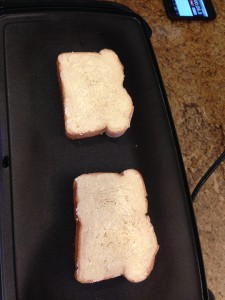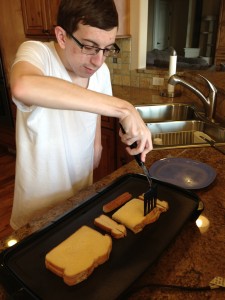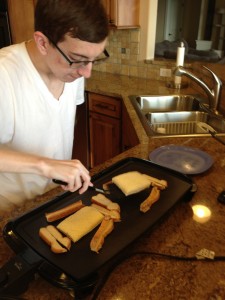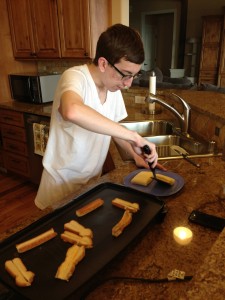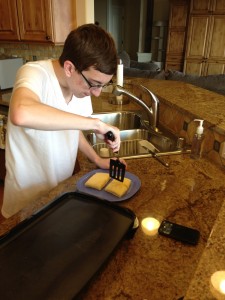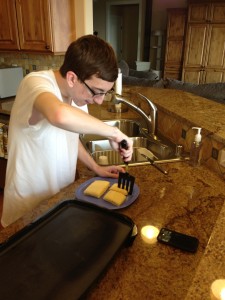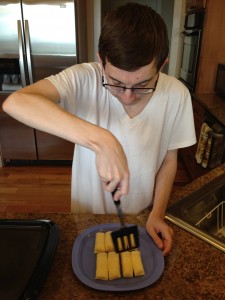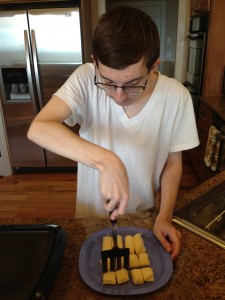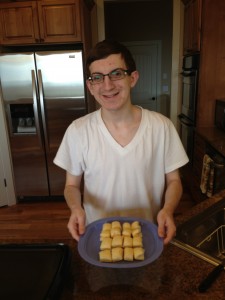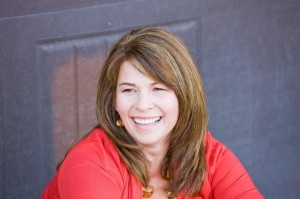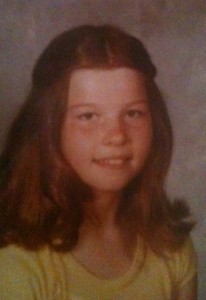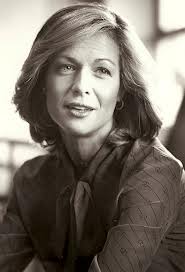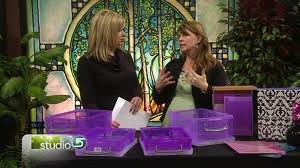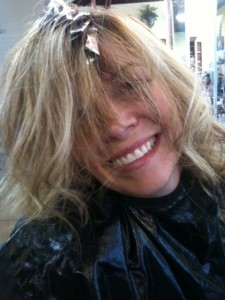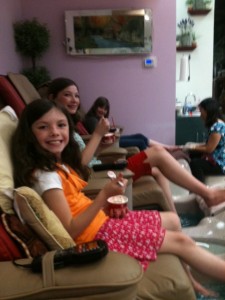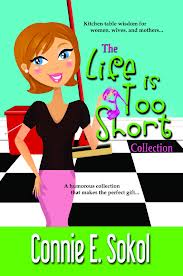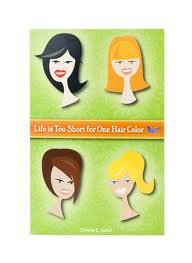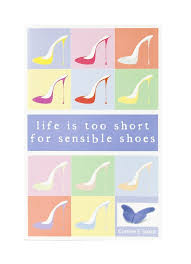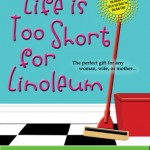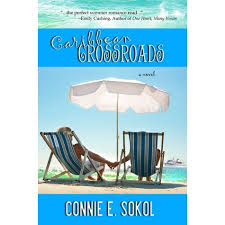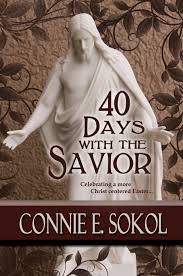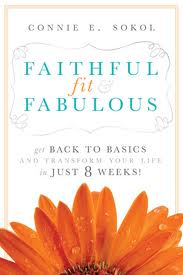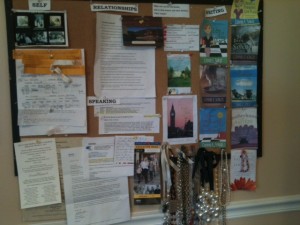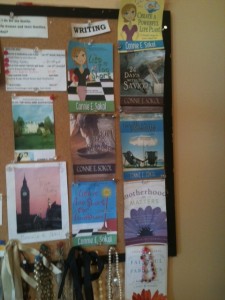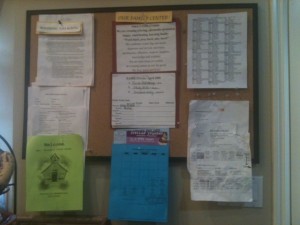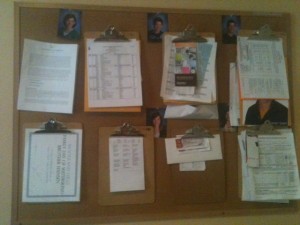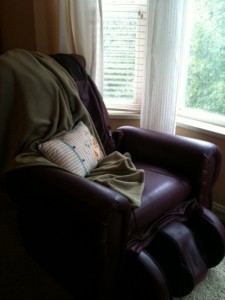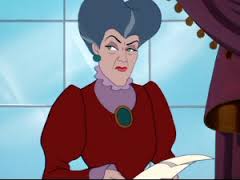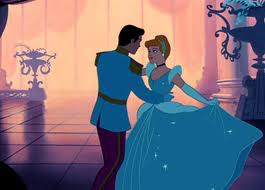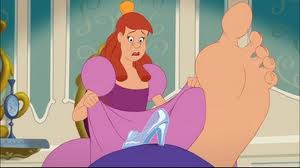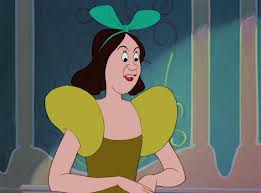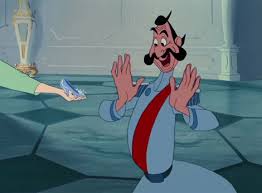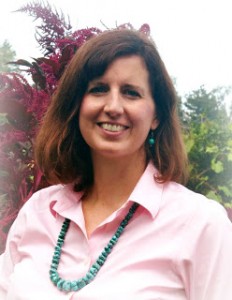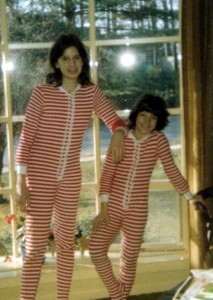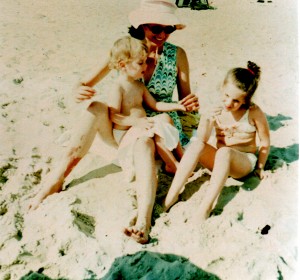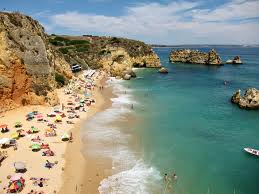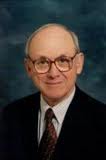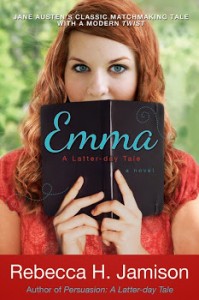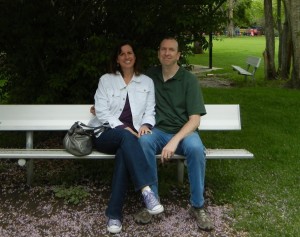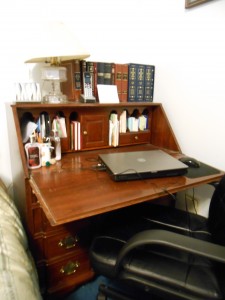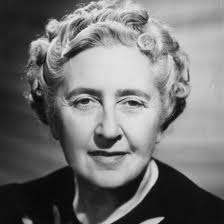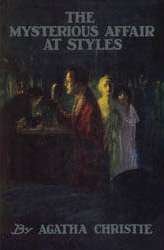Jordan Chaney is a force of nature, and a natural for his style of poetry (more about that in a minute). I say he’s a force of nature because of the power of his presence. Also, not ten minutes after he saw that we’d been assigned an area of less traffic in the Barnes & Noble store to do signings, he sought out the manager. While we didn’t get moved, they at least began to send traffic our way. :D
And I’m so excited to have this opportunity to interview a poet on my blog. In my opinion, poetry is the very essence of writing and the very best writers have the souls of poets inside them. Let’s get a peek inside Jordan’s soul, shall we?
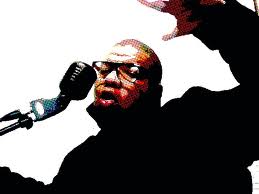 ME: Tell me about your father and mother and how each has affected your poetry. (And I’d love a picture of you as a child in either Alexandria, Virginia or Kennewick, Washington.)
ME: Tell me about your father and mother and how each has affected your poetry. (And I’d love a picture of you as a child in either Alexandria, Virginia or Kennewick, Washington.)
JORDAN: My mother was the person that introduced me to poetry when I was 6 years old. I remember her having a binder full of poems that she and her friends had written. I was fascinated by the collection because they were all typed up, laminated and 3 hole punched. It made the poetry seem special and important from my youthful mind. It drew me in. Besides poetry she used to draw pictures with color pencils from time to time, they were really good too. Her creativity made a huge impact on me as a child.
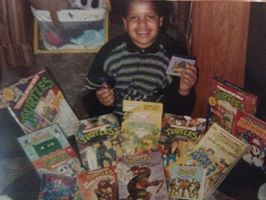 (Jordan surrounded by books as a child in Kennewick…a Ninja Turtle fan!)
(Jordan surrounded by books as a child in Kennewick…a Ninja Turtle fan!)
My father committed suicide when I was 3 years old. I didn’t have the chance to gather many impressions of him, but from stories I’ve heard and old polaroid photographs I’ve learned that he had a great sense of humor and he loved art as well. My dad was a hard worker. He was employed by AT&T and started out collecting change from pay phones and worked his way up to PBX installation which is climbing up the telephone poles and connecting wires to and fro I assume. I am the product of a soft-hearted poet and a hardworking electrician.
(And, believe me, it shows. The soft-heartedness in his poetry, and the work ethic in his drive to market his poetry and make connections.)
ME: What was the first poem you ever recall reading, and which poem had the greatest influence on your desire to become a poet?
JORDAN: The first poem that I ever read was when I was 6 years old and it was titled “Mr. H.” The poem was about a woman that was dating a man named Mr. H and it was a very abusive relationship. No matter how badly Mr. H abused the woman, she, to save her own life, could not leave him. At the end of the poem it is revealed that Mr. H is actually the drug heroin and she is losing a battle to her addiction. As you can imagine this is pretty heavy reading for a child. But it taught me personification as far as structure goes and it taught me empathy for real ills that humanity faces.
Later in life I came across a poet named Saul Williams. His poem, Amethyst Rocks, reminded me so much of Mr. H but with power and intensity. Amethyst Rocks was the first spoken word performance piece that I ever witnessed. It is still to this day the only poem that has given me chills. It completely changed my direction with where I wanted to go with poetry.
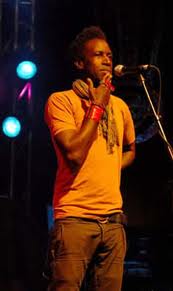 (Saul Williams in performance)
(Saul Williams in performance)
ME: What did you think you wanted to become when you were in high school, and how and when did that shift to poetry? (And I’d love to post a high school picture of you.)
JORDAN: When I was in high school, I knew exactly what I wanted to be–a public speaker and a poet.
In 10th grade during Career Week, we were given an assignment to write a career paper based on what we wanted to do for the rest of our life. I spoke to the guidance counselor and told her very confidently that I wanted to be a public speaker and a poet. She immediately shot back in what I know now to be a patronizing tone, “Oh honey, that is not a real career. You need to choose something more realistic, ok?”
I was crushed. My dream was shot down. I mean here my whole life teachers and other people as well were constantly beating into my head that I could be whatever I wanted to be in life. That was the on-going campaign slogan from kindergarten on up and now all of the sudden it changed to “You can be anything you want, but choose something realistic.”
So I chose to write my career paper on becoming an Astronaut.
My latest book of poetry is titled ROCKET FUEL FOR DREAMERS. (And let me add that it’s been endorsed by local NYT best-selling author Patricia Briggs.) I never became an Astronaut per se but here I am still reaching for the stars as a public speaker and poet with hundreds of speaking engagements and poetry performances under my belt.
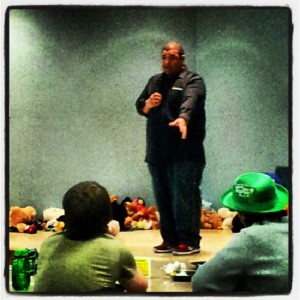 (Jordan proving his guidance counselor wrong in one of his workshops)
(Jordan proving his guidance counselor wrong in one of his workshops)
Kids, you can be anything you want to be. You just got to always believe that it is possible and that all dreams have the potential to become reality. Don’t let anyone politely guide you away from them. They don’t know about the wild fires dying to climb out of you, only you do.
(Well said!)
ME: Why verse? Why not fiction or memoir? In other words, in your opinion, what can verse do that other forms of creative writing can’t? And what is the difference between a poet and what you call yourself–a spoken word poet?
JORDAN: To be honest, fiction and memoirs have always been scary for me to take on as a project simply because of the length, technical aspects, and structure. I didn’t feel ready to write larger stories up till now. I am actually working on a memoir behind the scenes. (Yay! You’ll have to let us know when it’s done.)
There has always been freedom with verse. No punctuation is needed, misspelled words are welcomed phonetically if you want, it can rhyme or not rhyme, it can be long and drawn on or to the point and pithy. Poetry is Vegas for a writer. Anything goes really. (I’ll have to admit, that’s a new way of looking at it.) Though after writing it for years I have found patterns that work better than others when it comes to getting a message across.
I always have considered myself a poet. A spoken word poet to me falls under the umbrella of poet. Spoken word poetry has more of a theatrical aim than poetry that is just written to be read on page alone. When I am speaking at high schools, my talks are a blend of motivational speaking and poetry. Spoken word is a more entertaining medium and an effective way of getting a message across. Message is everything for me.
ME: Having met you, I know you have charisma and are a real people person. How have you used those skills to enhance your career as a poet?
JORDAN: I genuinely love people. I love meeting all kinds of people and on the upside of that you never know who somebody knows. I have shaken hands with people who have turned around and introduced me to New York Times Best Selling authors. I have met people whose stories have turned into my most popular poems. Having a genuine love for people has by default created many great opportunities, fans of my work, and most importantly long-lasting, genuine friendships. Some people call it networking, I call it friend collecting.
(And he has a gift for it. You know how moths are drawn to light? Well, he’s a light.)
ME: Please tell us about the workshop you’ve put together, and where has it proven most effective? (I’d love a picture of you workshopping.)
JORDAN: The first workshop that I put together is called Speaking From the Pen. It is an interactive workshop equipped with communication and improv games as well as writing prompts, all designed to help a person become a more confident, creative communicator. I have done this workshop for 4th and 5th graders, junior high and high school students, teens in alternative schools and the juvenile justice center, college kids, and even parents.
I have found that it is most effective with people that are looking for something more, for growth, for self-improvement. Because my workshops are not just getting down to the bones of writing and performing. My workshops are about unveiling your dreams and your passions and how confidence, creativity, and communication can help you get there!
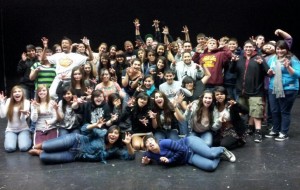 (Jordan, in the rear, with one of his enthusiastic workshop groups)
(Jordan, in the rear, with one of his enthusiastic workshop groups)
ME: Your poetry has begun to take you places. What’s the most exotic destination you’ve visited in pursuit of your art, and where would you like to go next? (I have to have a picture of you in that most exotic location.) Also, when traveling and performing abroad, do you worry about translating your verse, or do you keep it in English?
JORDAN: The most exotic place my poetry has taken me is Athens, Greece. Earlier this year, a friend of mine posted a link for a unique opportunity to attend the Athens School of Fine Arts. I figured I would give it a shot. Lo and behold, I was 1 of 22 artists from around the world chosen to attend. (You see? His gift for friendship paid off.)
 (Jordan in front of the Parthenon)
(Jordan in front of the Parthenon)
All that I learned there would take up about 20 pages so, in short, I learned that with art anything is possible and it is important for the world that an artist stands his ground boldly and courageously.
I am going to London next and I am beyond excited about this opportunity. Supreme elation is what I feel. I have had people ask to have my poetry translated into their native tongue and I have been perfectly ok with that. In fact, in my book there is one poem that is written for migrant workers that I had translated into Spanish.
ME: Despite the likes of J.K. Rowling, novelists are generally classed among the poor, and poets even more so. How do you support yourself financially, or are you able to rely solely on your creative work?
JORDAN: Gigs. Workshops. T-shirts. Speaking engagements. Performances. Books. Sometimes tips. I believe that a creative person has to also be creative entrepreneurially in order to thrive as an artist. That is the short answer.
The longer answer can be found on page 12 of ROCKET FUEL FOR DREAMERS, which can be downloaded for free from Smashwords.com or purchased at Barnes & Noble.
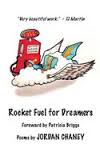 (Way to promote yourself! Who can resist a free download to get the long answer?)
(Way to promote yourself! Who can resist a free download to get the long answer?)
ME: Please talk about your poetic process, and the differences between your two published works, DOUBLE BARRELED BIBLE–A POET’S QUEST FOR THE ALMIGHTY and ROCKET FUEL FOR DREAMERS: POETRY. Also, what are you working on next?
JORDAN: DOUBLE-BARRELED BIBLE is the rawest material I have written so far. It is all of my frustrations with religion and politics, me reconciling coming from poverty and a broken home, and struggling to find a balance between my spirit and my flesh. The tone is very heavy, real and dark with a thread of light inter-mixed throughout its pages.
ROCKET FUEL FOR DREAMERS is the opposite of DBB, it’s about self-love, it’s about going after your passions, it’s about wine, and Ninja Turtles, it’s for my son, the women that I have loved and still love, it’s peppered with Greek mythology and wild imagination. There is even a glossary in the back of the book!
(Now that’s got to be a first–a glossary in the back of a poetry book.)
I am currently putting together a chap book of 10 poems titled Maria, which will be all of the things I never said before, a confessional piece that I have found very hard to talk about in the past, and what my actual thoughts are on life, god, and religion.
I, like many creative people, keep a journal of endless ideas. I only share the ideas that are in motion.
(Nice way to put it. :D)
ME: Finally, please share a poem that describes one of your favorite creative spaces–a place where you find it easiest to compose poetry. (And I’d love a picture of that space.)
JORDAN:
ODE TO GRAPE
I have a crush on you
you beautiful bulbous
berry of the gods
you galaxy of dark blue stars
you plump and precious
bottle of Pinot Noir
I simply adore you
you sometimes gorgeous green thing
drooping a thousand times from paintings always nude and next to tulips the Pinot Gris on your two lips puts the kiss in kismet
it’s serendipitous the way
we have come together
mighty migrant workers
are up to their shins in mud
are sweating in the sun
are plucking darkened rubies
all for my tongue
getting paid in pesos
to slave away
for my fair love
you are endless and without edges
a purple pearled necklace
with a cluster of cleavage
dangling beneath it
a scarlet goddess
robed in a red dress
sagging on the vine
marauding my fantasies
every midnight
when the sky light is merlot-like
(Note: The poem continues for several stanzas. To read the rest, you’ll have to get a copy of ROCKET FUEL FOR DREAMERS)
 (A beautiful, inspiring view for Jordan. Needless to say, there are many wineries in this region and I have a feeling he’s familiar with at least some of them.)
(A beautiful, inspiring view for Jordan. Needless to say, there are many wineries in this region and I have a feeling he’s familiar with at least some of them.)
If you want to learn more about Jordan, his poetry, and his workshops, check out his website. He’s also on Facebook and Twitter.
Next Wednesday, I’ll be featuring Kathi Ellis, an award-winning motivational speaker who has authored a self-help book.
Originally posted 2013-10-02 06:00:34.


